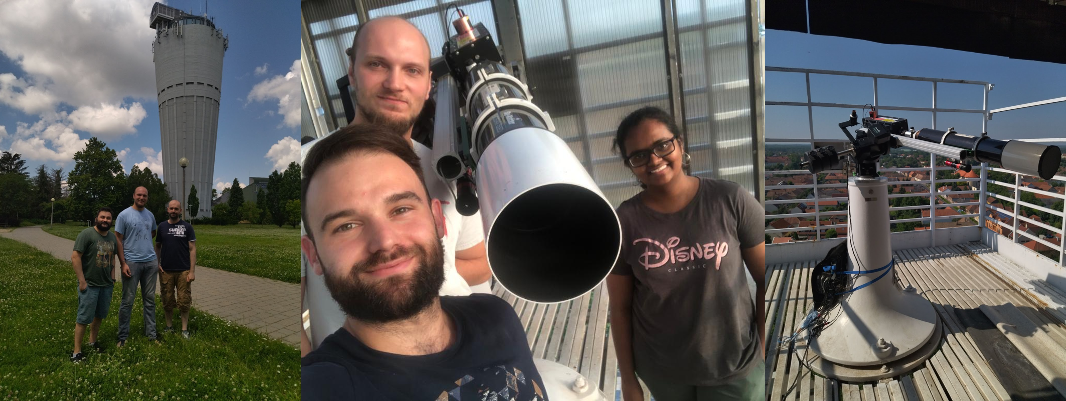
Solar Spectacles and Palinka Adventures: A Month at the Gyula Bay Zoltan Solar ObservatorySolar Spectacles and Palinka Adventures:
written by: Shifana Koya, Edin Husidic, Guilherme Nogueira, and Marianna Korsós
In the context of the Space Weather Awareness Training Network (SWATNet) project, twelve PhD students embarked on a unique journey, aiming both at a better physical understanding of space weather phenomena and developing numerical and machine learning tools to predict those events. As part of their PhD training, over the course of a month, they partnered up to conduct observational research at the Gyula Bay Zoltan Solar Observatory (GSO) nestled in the charming town of Gyula, Hungary. This blog article provides a glimpse into their experiences, offers insights into their daily routines at the solar observatory, and includes the enriching cultural encounters they embraced along the way.

Solar Ambitions: Setting the Stage for Sun Research
Like many other physics students around the world, the fascination of the starry sky and the unimaginable vastness of the universe served as a major motivation for us to pursue physics. When we read about the achievements of the founders of modern astronomy such as Brahe, Keppler or Galilei, we could not help but imagine how they observed the Sun and other stars, and recorded their data for future generations of researchers. While astrophysics often remains a predominantly theoretical field for many students, the SWATNet project provided us, as early stage researchers (ESRs), with a remarkable opportunity – a chance to work at a solar observatory in Hungary for an entire month.
For 11 out of the 12 ESRs who live and work outside Hungary, the journey to the observatory commenced with a flight to the Budapest airport. Following our arrival, at the main international railway station Keleti, we embarked on a three-hour train ride with a train change in Bekescsaba, the capital of Bekes County, ultimately arriving at our destination: Gyula.
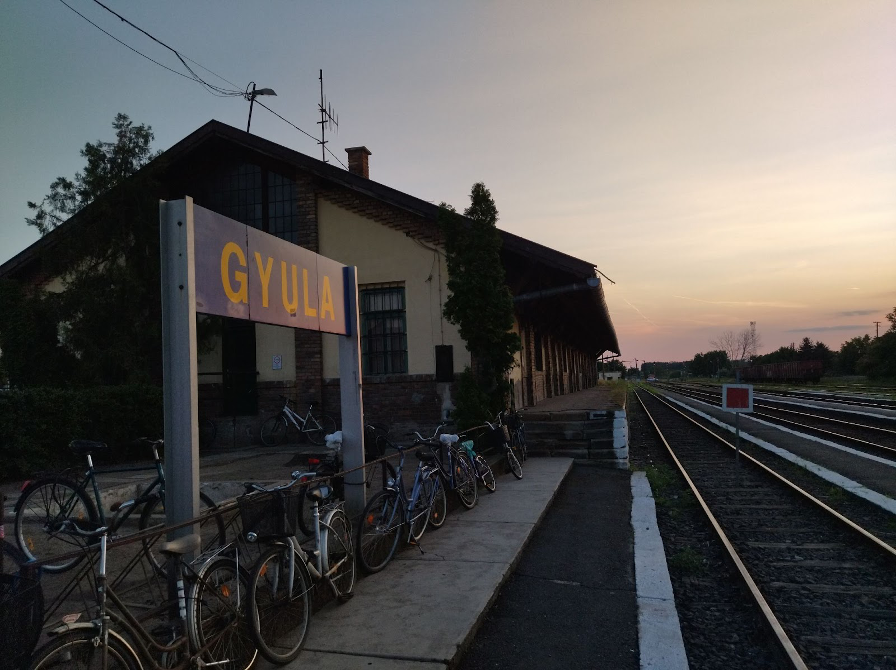
Gyula is located in southeastern Hungary, close to the border with Romania. It’s best known for its well-preserved medieval castle and also boasts the distinction of having the country’s only remaining brick fortress. While the city is renowned for its thermal baths, its rich history and vibrant culture stand out just as prominently.

The training was conducted at the Gyula Observatory, which is uniquely perched atop the city’s water tower. Here, students got to familiarise themselves with the magneto-optical-filter telescope. The instrument is adept at capturing Doppler velocity and magnetic field strength measurements within the chromosphere. This data is crucial for predicting solar flares and coronal mass ejections, which can disrupt our technological infrastructures in space and on Earth.
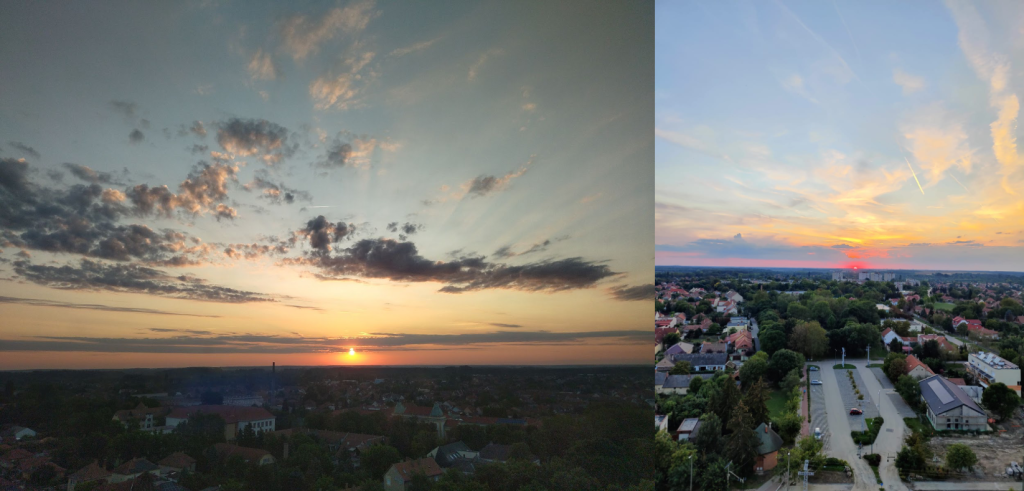
Solar Routine: A Glimpse into Observatory Life
The observatory training kicked off with an introduction to the telescope’s features and capabilities. As days went by, we dove into hands-on activities, taking daily solar images. But our learning didn’t stop at mere observation. We also delved into the intricate task of processing these raw captures, transforming them into data primed for scientific analysis. This immersive experience allowed us to hone our technical abilities and gain a deeper understanding of the complex world of astrophysical research.
Apart from this, we could also learn a bit about the technical part of the job, getting involved in the maintenance tasks of the telescope and facility.
The following describes a typical day at the observatory for us “sungazers”. Our day usually began very early around 5 a.m. local time with the assessment of the weather, because optical observations of the Sun depend very much on the weather. Rainy or heavily cloudy days prevented solar observations, but on the other hand, left us free time for other research work away from observations. However, even on clear, cloudless days, observations of the Sun could be affected. Excessive humidity can cause turbulence in the atmosphere and distortion of light, which in turn can affect image quality. In addition, scattered and dispersed sunlight might reduce the contrast between essential solar features like sunspots which are of great interest to us.
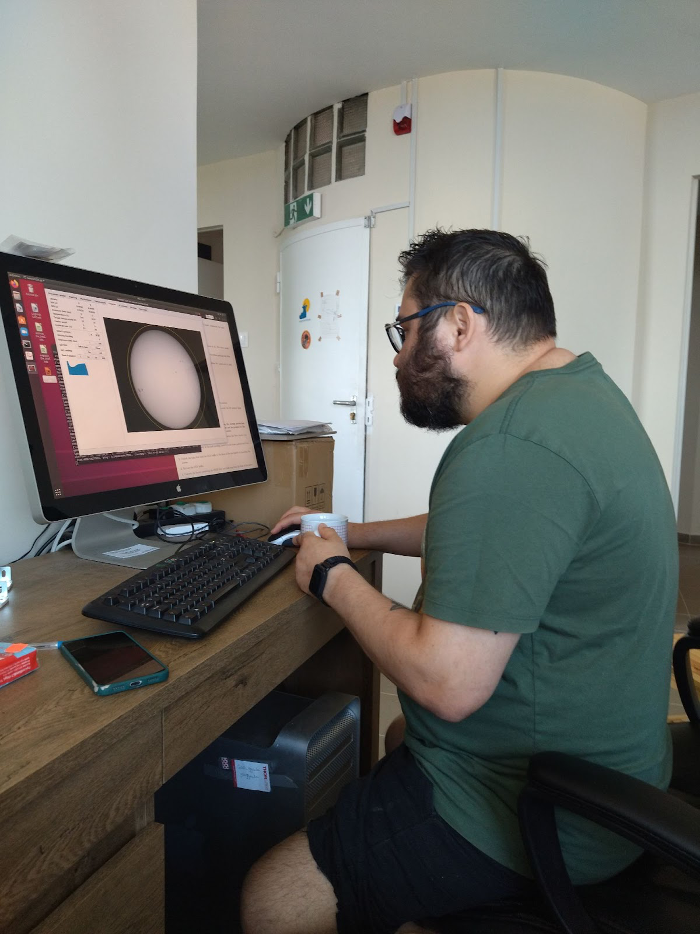
Monitoring the wind speed is another critical aspect when doing solar observations. Too strong winds can significantly impact the image quality, for instance, by causing the telescope to vibrate and shake, which can lead to blurry images or cause the telescope to become misaligned, disrupting its pointing accuracy and leading to difficulties in tracking the Sun. There are also safety concerns, since high wind speeds can cause mechanical stress for the telescope and tower, and pose safety risks for both the equipment and personnel operating the telescope. While the Sun could also be observed later during the day, usually observations in the morning are preferable due to reduced air pollution that unavoidably comes during the day.
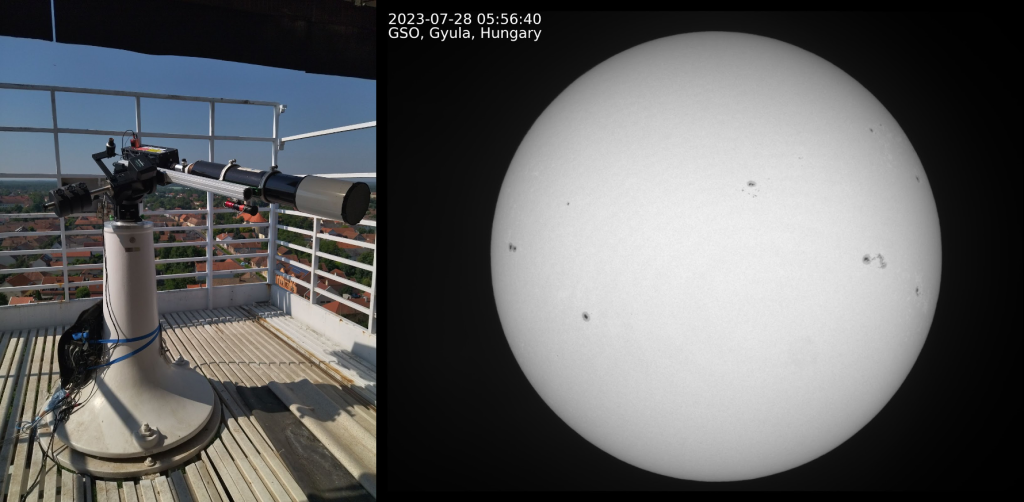
f the weather conditions allowed an observation of the Sun, all systems had first to be turned on and the dome over the telescope had to be opened. The entire control of the dome and the telescope is carried out conveniently via computer from the air-conditioned living area of the observatory. This was a huge relief, because the anteroom in the upper area of the telescope structure, where the main computer is located, tends to become uncomfortably warm already early in the morning in the summer.
Once all necessary settings were configured and the devices had reached operating temperature, the initial step involved capturing so-called flat field images. Even under ideal weather conditions, the raw images of the Sun are subject to distortion, for instance, due to dust on the lens or the surface of the digital sensor, and because some pixels are dead or less sensitive than others. To address this issue, a calibration frame termed flat field is recorded to correct the brightness of each pixel before the Sun image is processed further. Following the acquisition of the flat field images, the actual solar images are captured. These images are taken using both cameras connected to the telescope, employing two distinct approaches: We either took 100 frames for the so-called scientific images every 10-20 minutes or a series of images with 10 frames every minute.
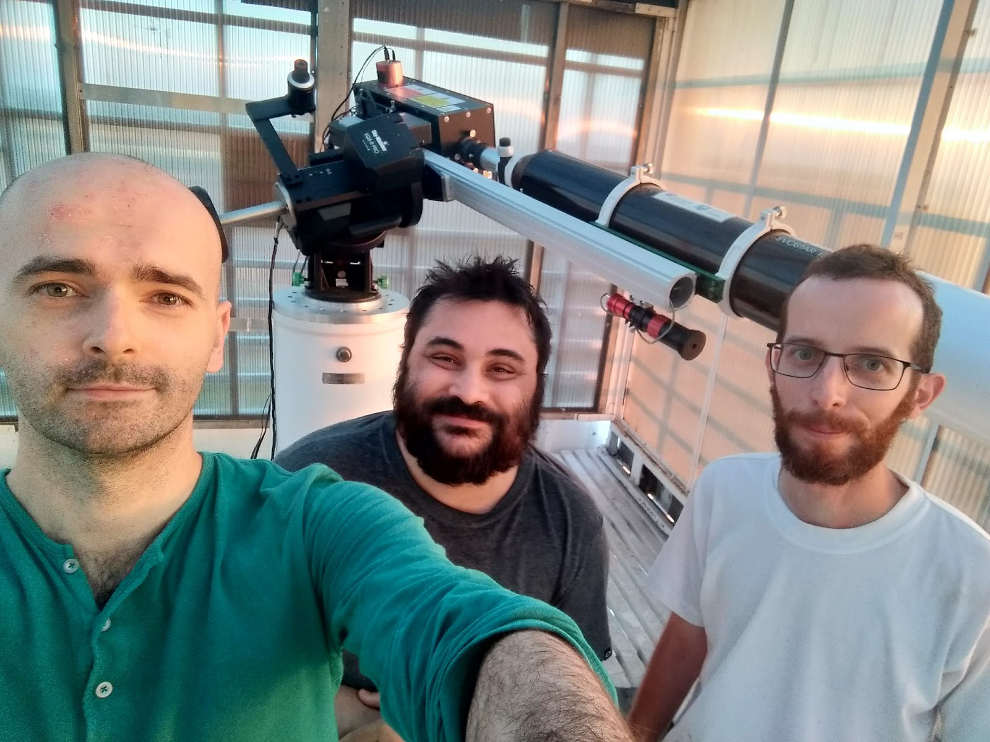
Later during the day, further observations became possible, especially if the morning weather conditions were not optimal. Additional tasks included testing of the equipment, recording bugs and communicating them to the main operators of the observatory and fixing them, and transferring of the large data amounts.
Exploring Gyula’s Soul: Sightseeing, Palinka Tasting, and Culinary Adventures
Despite its modest size, with just over 30,000 inhabitants, Gyula offers a variety of recreational opportunities beyond the observatory. The people of Gyula were warm and welcoming to us students. Despite the occasional language barrier stemming from a lack of English proficiency, they always remained friendly and helpful. The first thing that should be highlighted here is the excellent Hungarian cuisine. Gyula is home to a number of very nice restaurants that offer both local dishes such as goulash, paprikash, langos, or the wonderfully refreshing fruit soups, as well as international dishes from Italy, Austria or France. A favourite place among all students became the pizzeria Skorpio which delivers pizzas of world standard 🙂 Interestingly, there is a fast food place in Gyula, whose name will not be mentioned here, that has had a polarising effect on our group. While some praised the place, others downright demonised it. However, as the Latin saying goes, “De gustibus non est disputandum”, meaning, “There is no accounting for tastes.”.
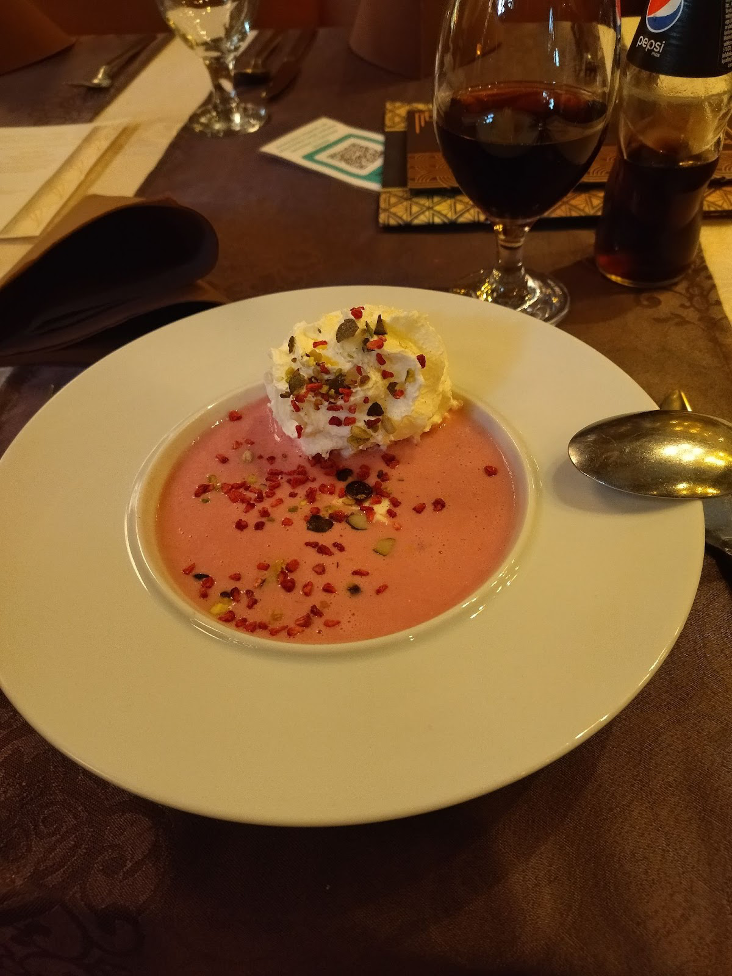
Regarding (stronger) drinks, Palinka, a fruit brandy that was traditionally made from apricots, plums or cherries and is now also made from rarer types of fruit such as blueberries, has established itself as very popular among some of our students. It is important to note that Palinka was enjoyed strictly during evening hours, ensuring that its consumption did not interfere with the precision of our solar observations. After all, we could not afford to introduce any additional sources of image distortion while studying the Sun 🙂
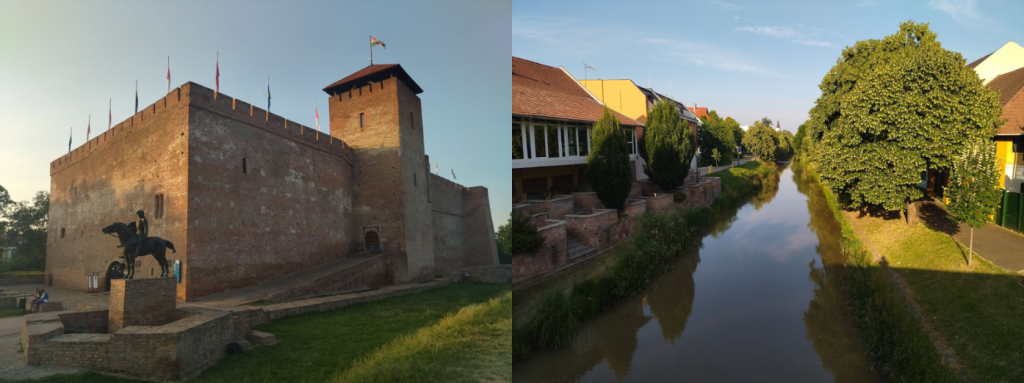
In addition to its culinary delights, Gyula provided us with a diverse array of activities to enjoy. Being a renowned health resort, we enjoyed the wonderful Gyula spa after solar observations during the hot summer days. Walks along the Élővíz Canal took us to the 15th century Gyula Castle or to the Almasy mansion, which houses a museum. Those students who were fortunate enough to be in July in Gyula, enjoyed the theatre and music festival at the castle complex.
Farewell to the Sunny Sky: Leaving Gyula
After a month of solar observations, the day came when it was time to say goodbye to the observatory and the pretty little town of Gyula. Despite our joy at returning home and going back to our usual work, we will miss the GSO, Gyula, the hospitable Hungarians and the delicious Hungarian cuisine. For most of us participants, the time and hands-on work at the GSO was a unique experience due to the more computational and theoretical nature of our usual PhD work.
In the name of all ESRs and members of the SWATNet project, we would like to extend our gratitude to the GSO team for their warm hospitality and great organisation, especially to Prof Dr Robertus Erdélyi, Dr Marianna Brigitta Korsós, Dr Balazs Asztalos, PhD candidate Szabolcs Soós, and technical support János Temesváry.
